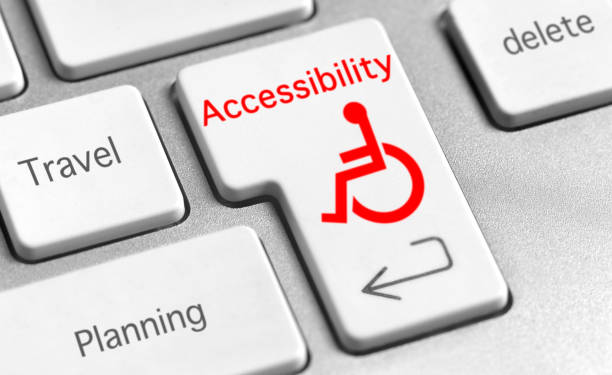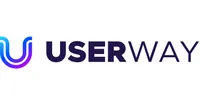How to choose a web accessibility service and what features should you look for?
Read on to find the best web accessibility service for your business

Accessibility is a critical consideration for all webmasters. It involves designing websites so that people with disabilities can use them effectively. This covers physical and situational disabilities and people restricted to low bandwidth and speed due to socio-economic circumstances.
One of the best ways to ensure your website is accessible is by utilizing a professional web accessibility service. These services use both automated and manual reviews to assess your website's compliance with various accessibility standards. They identify any issues and provide actionable suggestions to rectify them.
For most web accessibility software, you install a short piece of code on your website, and an artificial intelligence (AI) bot crawls through it to identify accessibility issues and provide recommendations for fixing them. This article will explain how a web accessibility service works and the main considerations for choosing an excellent one.
Reader offer: Get 10% off on Userway
UserWay is a web accessibility solution that automates ensuring compliance with various governmental laws and regulations. UserWay's suite includes an accessibility website audit and real-time content monitoring tools, offering expert recommendations to maintain compliance and integrity.
Preferred partner (What does this mean?)
What is a web accessibility service?
It is a software platform offering robust tools to make your website more accessible. These platforms have both automated and manual aspects. The automated tool scans your website to identify accessibility flaws – it’s usually an AI tool trained on a vast dataset of accessible websites.
Another critical part is the manual aspect. It involves human experts digging deep into your website to identify flaws and help you fix them. You’ll also get direct coding and design help to make your website friendly to people with disabilities.
Web accessibility services usually cost significant amounts because of their sophisticated functionality. Expect to pay hundreds to thousands of dollars annually for a website – you can search for a cost-effective one that fulfills your requirements.
WCAG standards compliance
Sign up to the TechRadar Pro newsletter to get all the top news, opinion, features and guidance your business needs to succeed!
Most web accessibility software base their review on the formal Web Content Accessibility Guidelines (WCAG). These guidelines, published by the World Wide Web Consortium, provide recommendations for making websites accessible. It’s what most regulators use and, therefore, the guidelines accessibility software checks websites for.
These software tools use artificial intelligence and machine learning to check whether your website complies with the WCAG guidelines. If not, they alert you to the problems and provide recommendations for fixing them.
How to choose a web accessibility software
These are the critical factors to consider when choosing a web accessibility service:
1. Cost
Cost is the first consideration when choosing a platform, given the importance of selecting what you can afford in the long term. Some accessibility tools have transparent pricing, while others have opaque pricing that discourages potential clients, especially small businesses.
You can compare the costs of different platforms against your desired features to see what works best for you. Before you start, note that web accessibility tools are often expensive, so don’t be surprised if you see some running into thousands of dollars. However, remember that you can always get a good deal. Many accessibility software providers allow you to contact their sales team and negotiate the best deal.
Always check if the platform offers a free trial that lets you test the features before making a final decision. You can either sign up directly for a free trial or request a demo from the sales team. Use the trial period to test every feature to make an informed decision. Don’t hesitate to move on if you don’t like what you see.
Also, be sure of the refund terms before paying, in case you change your mind shortly after signing up for the platform.
2. Comprehensive testing
You must understand the testing process of the accessibility service you’re about to choose. An ideal one should offer a healthy mix of automated and manual website testing. Leaning too much on either can cause important accessibility issues to go undetected.
Your platform should offer sophisticated automated scans, with web spiders that crawl every page on your website to detect accessibility issues. You should be able to set standards and rules for the automated testing, e.g., preventing it from crawling such pages, and get detailed reports about the platform’s findings and suggestions.
Automated testing can’t identify all the issues based on the WCAG guidelines. That’s why your website also needs manual review. A digital accessibility expert or team of experts should analyze your website and prepare thorough reports showing their findings and recommendations. Depending on the complexity of your website, a manual audit can take up to several weeks.
3. Legal knowledge
Many jurisdictions have strict web accessibility rules that websites must comply with or face significant penalties. For example, failure to comply with the Americans with Disabilities Act (ADA) can result in a $75,000 penalty for the first violation and $150,000 for subsequent violations.
A good digital accessibility service should have deep knowledge of these regulations across different continents. They should understand the legal details and guide you on complying with them (including where exceptions are permitted). Your chosen service should understand the changing legal landscape surrounding web accessibility so you don’t unknowingly violate the rules.
4. Reporting and insights
Your web accessibility service should provide detailed reports concerning every issue found on your website and suggestions for fixing them. The reports should be clear and precise, pointing out the flaws identified by automated and manual checks. They should also provide well-thought-out recommendations to solve these issues and make your website compliant with accessibility regulations.
Detailed reports help you deeply understand the issues with your website and guide you on fixing them to attract more users and stay compliant.
5. User interface
You need a web accessibility tool that’s easy to use and understand. It’ll be ironic if your chosen service doesn’t have an accessible interface. Signing up on the platform and navigating its features should be easy. You should have access to an interactive dashboard to monitor the issues detected on your site and the recommendations for fixing them. Integrating the accessibility service with your website shouldn’t be a hassle.
6. Customer support
It’s vital to select a web accessibility service that offers excellent technical and customer support. Using a web accessibility service can be challenging, especially for first-time users, so you need every type of help you can get. You should be able to contact the support team via telephone, email, or live chat if you have any issues.
Look for a platform that offers top-notch coding assistance to optimize your website for compliance with WCAG standards. You should have access to complementary support resources like tutorials, webinars, and user guides so that you can solve some issues yourself.
The best way to judge a platform’s customer service is by reading reviews by previous or existing customers. If a platform lags in this area, you’ll likely observe many user complaints of poor customer service.

Why is web accessibility important?
1. Regulatory compliance
Many jurisdictions have explicit laws regarding web accessibility. These laws usually fall under anti-discrimination statutes, with significant penalties for violators. Sometimes, businesses pay millions of dollars in fines or settlements for what seem like trivial cases.
Affected persons can file civil cases against non-accessible websites and sometimes win big penalties. For example, US eDirect Inc., a significant government software contractor, built an online camping reservations website for the state of California. A California resident with impaired vision filed a lawsuit alleging that the website didn’t comply with WCAG standards, making him unable to use it. US eDirect Inc. paid $2 million to settle the lawsuit.
In another case, popular streaming website Netflix paid $755,000 to settle a lawsuit filed by the National Association for the Deaf (NAD), alleging the company violated the Americans with Disabilities Act by failing to provide adequate closed captioning.
Fortunately, it’s easy to comply with web accessibility laws and avoid such cases. A web accessibility service helps you do this.

2. It’s the right thing to do
Even if one isn’t compelled by strict regulations, building an accessible website is a good idea. According to the World Health Organization (WHO), at least 2.2 billion people worldwide have visual impairments, ranging from minor eye defects to total blindness. An accessible website allows this cohort, representing over 25% of the global population, to enjoy your website.
An inaccessible website means locking out millions of potential users, which isn’t good for business. Web accessibility helps build a better world for all and makes life less complicated for people with disabilities.
3. It improves the user experience
Complying with WCAG standards improves the user experience for users with and without disabilities. The WCAG guidelines aren’t solely restricted to people with physical or mental disabilities. Instead, they also make your website more enjoyable for conventional users, which helps retain them in the long run.
Notable features of an accessible website
An accessible website should have the following features:
1. Keyboard accessibility
One key WCAG guideline is that all features on your website should be accessible from a keyboard. Some people can’t use a mouse because of their physical disabilities but can use a keyboard; this guideline helps people access all the features on your website despite their physical restrictions. To make your website accessible, you can implement keyboard shortcuts for all its features.
2. Color contrast
Your website needs sufficient contrast between the text and background. This feature makes your website easier to read, especially for visually impaired people. Insufficient contrast means visually impaired people will struggle to read your website and likely abandon it. Besides, someone with perfect vision can also get annoyed if they have to strain their eyes to read your text.
3. Closed captions
All videos and audio on your website should closed captioning. To the uninitiated, closed captioning describes all dialogue in the video or audio, both spoken words and non-speech elements. It enables people with hearing impairments to understand what the video or audio they’re watching is about.
4. Logical heading structure
Any article on your website should be structured with logical headings, starting from H1 to H2, H3, H4, and so on. This feature organizes your content and enables visually impaired people to use screen readers to understand the article flow. Otherwise, the screen reader will dictate long paragraphs without clear structure, confusing the user.
5. Alternative text
Every graphical content on your website should have an alternative text that describes it. For example, a picture of a banana should have an alternative text stating “banana,” “bunch of bananas,” or something similar. Alternative text enables visually impaired people to take note of an image even if they can’t see it – their screen reader dictates the alternative description.
6. Resizable fonts
You should allow users to resize the fonts on your website, preferably up to 200%. This feature enables people with limited vision to increase the font size and read your website’s content.
7. Consistent navigation
The navigation menu should stay the same across all pages, enabling people with disabilities to navigate the site seamlessly. Otherwise, they might get confused and frustrated with your website.
8. Simple grammar
Except when necessary, avoid using overtly complex words that an average user can’t understand. Instead, write in a way that reaches the largest number of people possible. Aim for a score of 60 and above on the Flesch-Kincaid readability scale.
9. Accessible forms
When you create a form, every field on that form should have a descriptive label telling the user what to input. Users should be able to tab through the form to fill it out and submit it. These features help screen reader users understand the form and provide the correct details.
A web accessibility service should check and optimize your website for the above features. It should also review your website and help it comply with the WCAG standards as much as possible.
Final words
We have explained web accessibility services and the factors to consider to choose the best one. Follow our tips, and you’ll likely pick the best web accessibility service that fits your requirements.
Stefan has always been a lover of tech. He graduated with an MSc in geological engineering but soon discovered he had a knack for writing instead. So he decided to combine his newfound and life-long passions to become a technology writer. As a freelance content writer, Stefan can break down complex technological topics, making them easily digestible for the lay audience.

